How to Build a Sales Prospecting Plan (With 8 Proven Methods)
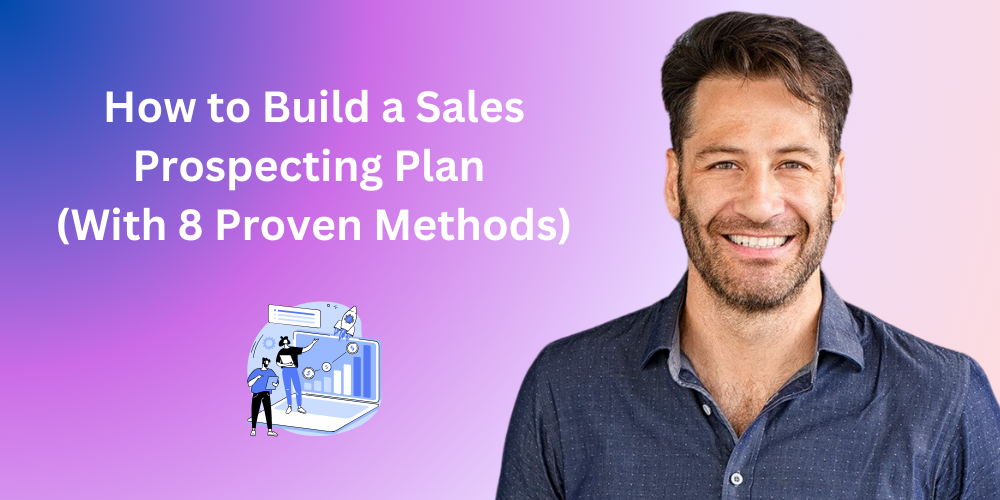
Prospecting can feel like searching for your keys when you're already late. It's tedious, frustrating, and essential. But it doesn't have to suck the life out of you. If you've ever wondered, "Where are these magical prospects hiding, anyway?" you've landed in the right place.
In this guide, we'll dive into how you can create an irresistible prospecting plan, find new leads consistently, and keep your sanity intact.
What Is a Prospecting Plan?
A prospecting plan is basically your treasure map to finding new clients or customers. Think of it as a structured way to attract and engage people who actually want what you're selling. Whether you're a salesperson, recruiter, freelancer, consultant, or even a real estate pro, this is your roadmap to avoid aimless wandering.
Why You Need a Prospecting Plan
Let’s be honest: without a plan, prospecting is like throwing spaghetti at the wall and hoping it turns into a client.
You end up:
- Chasing the wrong leads who were never going to buy
- Sending cold emails that get buried or deleted without a second glance
- Scrolling LinkedIn for hours, pretending it’s “networking,” but really just stalling
- Burning yourself out from doing too much with too little return
A solid prospecting plan helps you:
- Target the right people
No more pitching to anyone with a job title. With a plan, you define your Ideal Customer Profile (ICP) and focus your efforts on leads who are actually a fit—people who need what you’re offering and can say yes.
- Use your time efficiently

You know exactly what to do, when to do it, and why it matters. Instead of spinning your wheels, you’re taking intentional, repeatable steps that move the needle.
- Improve your response rates
Personalized outreach gets results. When you’re working from a strategy, your emails, messages, and calls are tailored—not templated to death. That’s how you stand out in a crowded inbox.
- Build a consistent pipeline
Prospecting isn’t a one-time sprint—it’s a system. With a plan in place, you’re consistently filling the top of your funnel, so you’re not scrambling when your current deals close.
- Avoid burnout

When you’re working a plan, you stop feeling like you’re shouting into the void. You start seeing results. And that momentum? It’s energizing, not exhausting.
How to Build a Prospecting Plan (Fast)

Sales guru Jim Brodo nails the prospecting process with his 5 Ps: Purpose, Preparation, Personalization, Perseverance, and Practice. Let’s dive in (and laugh a little along the way).
1. Purpose: Know Your Why (Or Waste Your Time)
Let's get real—not all prospects deserve your attention. Focus on people who genuinely need your stuff. Craft messages that resonate and clearly explain why you're their best bet. Remember, most buyers need to justify the purchase to someone (usually their skeptical boss). Give them ammo!
2. Preparation: Know Before You Go
Showing up to a prospect unprepared is like bringing potato salad to a barbecue without mayo—just disappointing. Do your homework. Know your prospect’s name, company details, and pain points. Being prepared builds trust and sets you apart from the competition.
3. Personalization: Don't Be That Spammy Salesperson
Generic emails? Delete. Personalized messages? Intriguing. Prospects can sense laziness, and they'll ghost faster than a bad Tinder date. Take the time to tailor your pitches. It's worth it.
4. Perseverance: Be Persistent, Not Annoying
Did you know it takes about 8 touches to get someone's attention? Yeah, it’s exhausting, but persistence pays off. Set realistic daily or weekly goals to keep your motivation up. And if someone doesn't respond right away, don’t panic—they probably just haven't had their coffee yet.
5. Practice: Prospecting is Like a Muscle
You wouldn't run a marathon without training, so don’t prospect without practice. Role-play scenarios, use business simulations, or chat with AI sales-training bots. The more you practice, the smoother your sales conversations will be.
8 Prospecting Tactics That Don’t Suck
Let’s be honest—prospecting can feel like speed dating with no snacks. You’re out here trying to catch attention, make a connection, and hopefully land a long-term relationship (or at least a meeting). But instead of shooting arrows in the dark, let's walk through prospecting methods that actually work—without making your soul shrivel up.
Here’s how modern-day sales reps are killing the game in 2025:
1. 👥 Build a Buyer Persona That’s So Good, It’s Creepy
Before you go sending random DMs like a digital door-to-door salesperson, know who you’re talking to. Craft that customer persona like you're making a character in The Sims—demographics, pain points, buying habits, and maybe even what kind of memes they like.
When you know your audience, your messages feel less spammy and more like “Hey, this person gets me.”
2. 📞 Warm Calling (A.K.A. Cold Calling’s Cooler Cousin)

Warm calling is just cold calling but with manners. You’re reaching out to folks who’ve already shown some interest—visited your site, downloaded a freebie, or maybe liked that oddly specific LinkedIn post you wrote at 2 AM.
Here’s a revamped email template:
Subject: Quick idea for [Company Name]
Hey [First Name],
I came across [Company] and couldn’t help but notice you might be tackling [specific challenge]. We’ve helped similar companies like [insert name-drop here] solve it without needing extra caffeine or budget stretch yoga.
Let’s chat—how’s Monday at 10 AM? Or throw me a time that works for you. I’m all ears.
Cheers,
[Your Name]
CTA: Let’s Make Magic Happen – Book a Call
3. 📬 Personalized Email Marketing (But Make It Human)
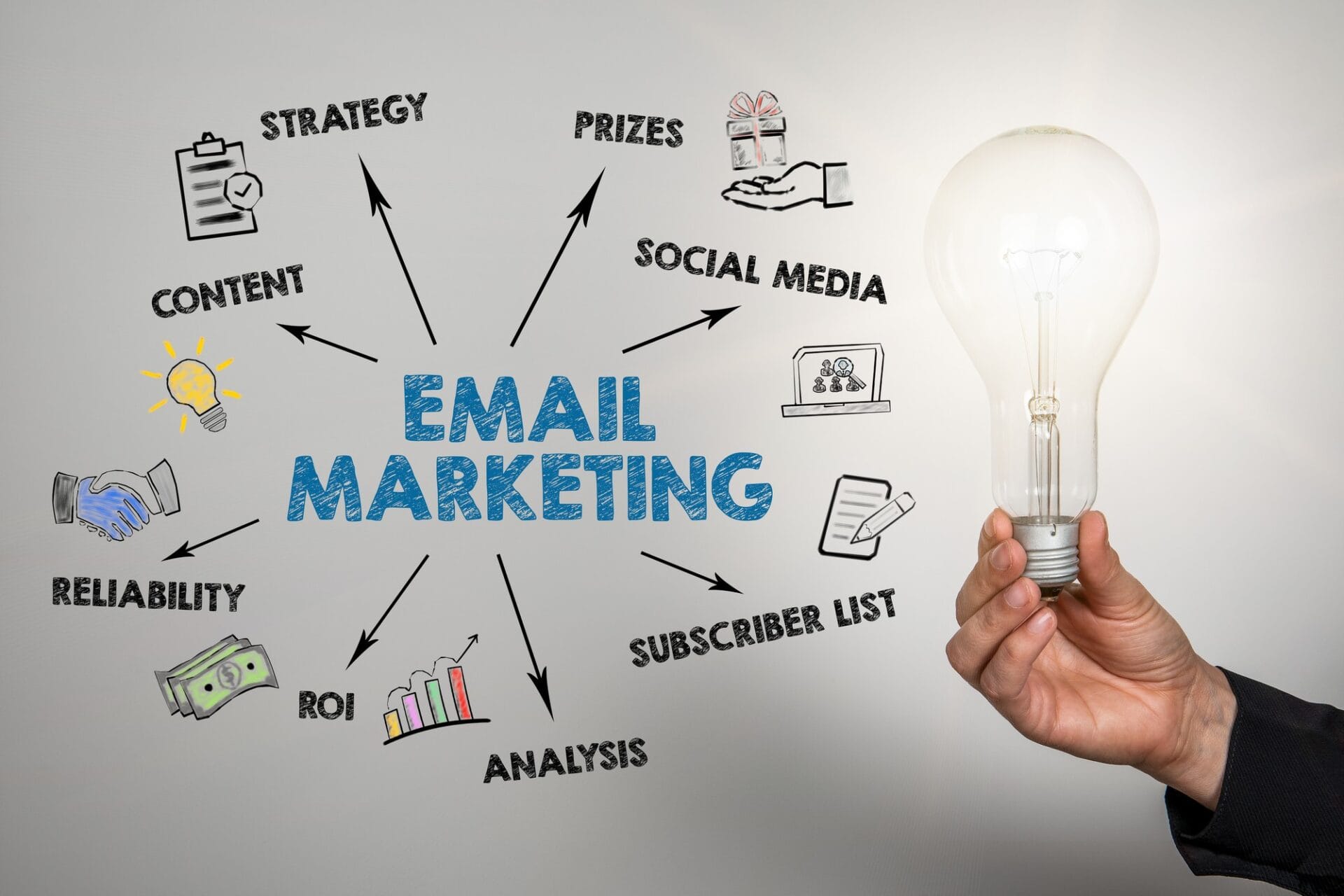
Forget “Dear Valued Customer.” If your emails sound like a robot wrote them, they’re headed straight to the trash folder. Personalization is more than just using someone’s name—it’s about relevance, timing, and tone.
Use tools that help you segment like a pro. Bonus tip: Try humor. A little chuckle can go a long way.
4. 💼 Hunt for Leads Like a LinkedIn Lion
LinkedIn is still the MVP for B2B prospecting. You can filter by job title, industry, location, and probably star sign at this point.
But here’s where things get spicy—use a LinkedIn automation tool like leadplay.io. It helps you auto-magically visit profiles, send connection requests, and slide into DMs without lifting a finger (well, maybe one).
So you can spend less time clicking and more time closing.
5. 🎤 Go Where the People Are (a.k.a. Events)
Whether it's a trade show, webinar, or that weirdly productive Slack group you joined last month, events are treasure troves of leads. You get face time, you build trust, and you might get some free snacks.
Pro tip: Follow up with everyone you meet like they’re your new best friend. The key to prospecting is persistence, not ghosting.
6. 📢 Don’t Be Shy—Ask for Referrals

If your customers love you (or even mildly like you), ask for a referral. Seriously. Referred leads are 4x more likely to convert than random cold leads. Plus, nothing beats the power of “Hey, my friend said you were cool.”
Create a simple referral system, offer an incentive, or just ask nicely. You’d be surprised how many people are happy to help.
7. 🤝 Co-Sell Like a Pro
Two heads are better than one—especially when one of them has access to a whole new audience. Partner up with companies offering complementary (not competitive!) products or services, and share the lead love.
Think: a CRM tool teaming up with a marketing agency. Or a donut shop partnering with a coffee cart. You get the idea.
8. 📊 Track Everything (Or at Least the Important Stuff)
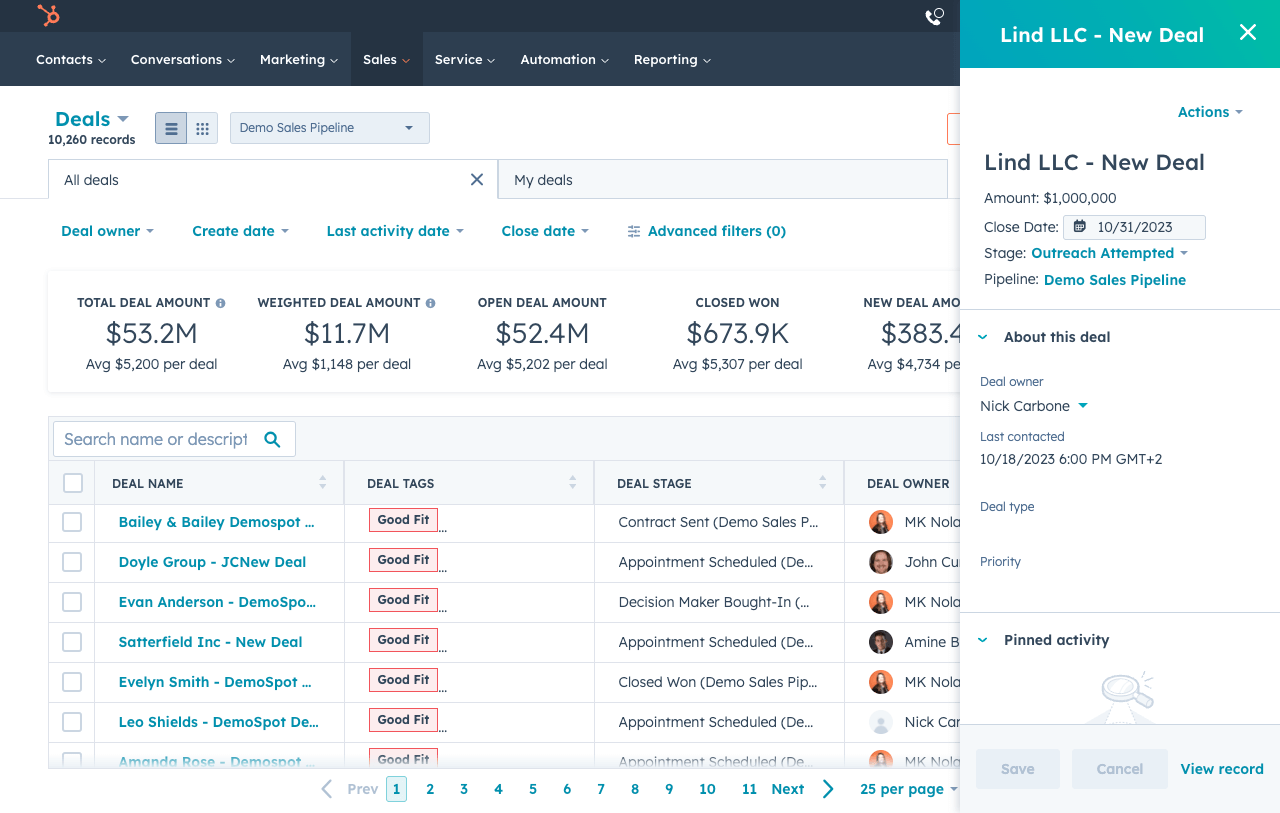
Last but not least—track your wins, your fails, and the “meh” results in between. How many leads did you contact? How many replied? How many booked a call, and how many ghosted you like last summer's situationship?
Use a CRM, a spreadsheet, or a sticky note wall—whatever works. The point is: what gets measured gets improved.
Prospecting Made Easy: 5 Simple Steps to Winning More Leads
Prospecting can feel a bit like fishing—sometimes you reel in a prize, other times just seaweed. But with the right plan (and a good dose of humor), you’ll catch more customers without breaking a sweat. So, let’s dive into these 5 easy steps to supercharge your prospecting game with LeadPlay.
1. Define Your Target Audience Clearly
First things first: know who you're talking to. If you’re selling vegan steaks, your target probably isn’t the annual BBQ festival crowd.
Define your ideal customer by:
- Location (Are they sipping espresso in Paris or camping in Colorado?)
- Industry (Finance whiz or startup guru?)
- Company Size (Solopreneur or enterprise giant?)
- Job Title (CEO or the intern who secretly runs everything?)
- Persona (Personality traits, problems, dreams—yes, even if they’re dreaming about vacationing on Mars!)
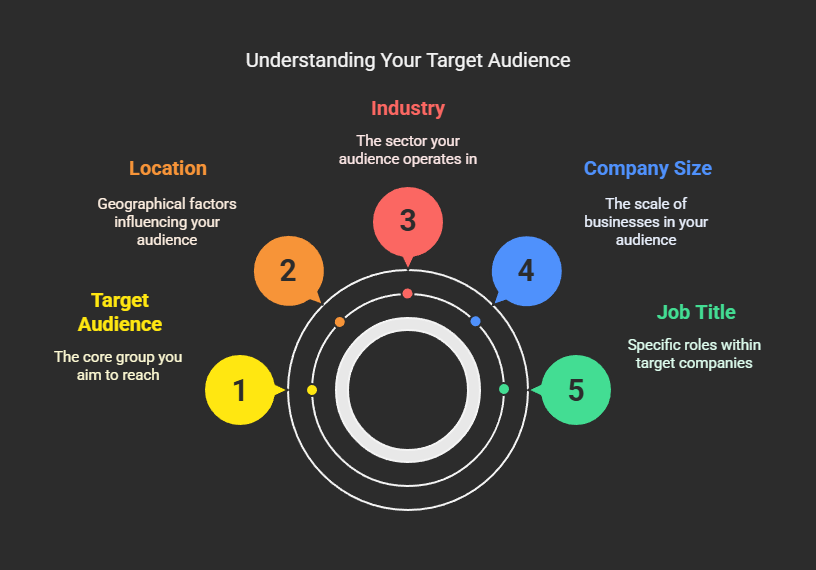
Understanding your customers means doing your homework:
- Identify: Surveys, social stalking (the friendly kind!), interviews, and listening to their online gripes.
- Distribute: Keep your whole team in the loop—so marketing doesn’t accidentally target Martians again.
- Create: Tailor your offerings based on what your customers actually want (shocker, I know).
- Collect: Keep asking for feedback. Bonus points if you turn complaints into praise!
2. Conduct Thorough Prospect Research

Congratulations, you've defined your perfect match! Now, stalk...err, research them (legally, of course).
Here’s what you’re looking for:
- Demographics: Age, preferences, and if they laugh at dad jokes.
- Company Info: Size, goals, and any juicy news.
- Industry Trends: What's hot and what's not, so you don’t accidentally sell flip phones in the smartphone age.
Social media, industry blogs, LinkedIn (aka corporate Tinder), and past customer data are your friends here. Look for patterns—people similar to your current happy customers are prime targets.
3. Select Effective Prospecting Channels
Now you've got your list—time to woo them. Think of it as dating: don't just slide into DMs randomly. Be strategic!
Some top channels include:
- Email (the old faithful)
- Social Media (for casual flirting)
- Advertising (make a flashy first impression)
- Events (face-to-face charisma)
- Content Marketing (show off your brains)
Mix things up to find your perfect combo—maybe emails to start, social media to build rapport, and events to close the deal.
4. Automate Your Outreach with Drip Campaigns

What's better than manual prospecting? Automating it, so you can sleep while your emails do the heavy lifting. Welcome to drip campaigns!
A drip campaign sends automated, personalized messages over time—like gently nudging your prospects toward the checkout button without being pushy.
Here's how you set it up:
- Choose your platform (Hint: LeadPlay, HubSpot, Marketo—they’re all good, but LeadPlay is extra charming.)
- Craft your messages (Keep it witty, useful, and less salesy than an infomercial.)
- Schedule and triggers (Timing is everything—don’t send business emails at 3 am unless your prospect is nocturnal.)
- Test and launch (Check it twice, launch once.)
- Monitor and refine (Like baking a cake—taste often and adjust.)
5. Track and Optimize Prospecting Results
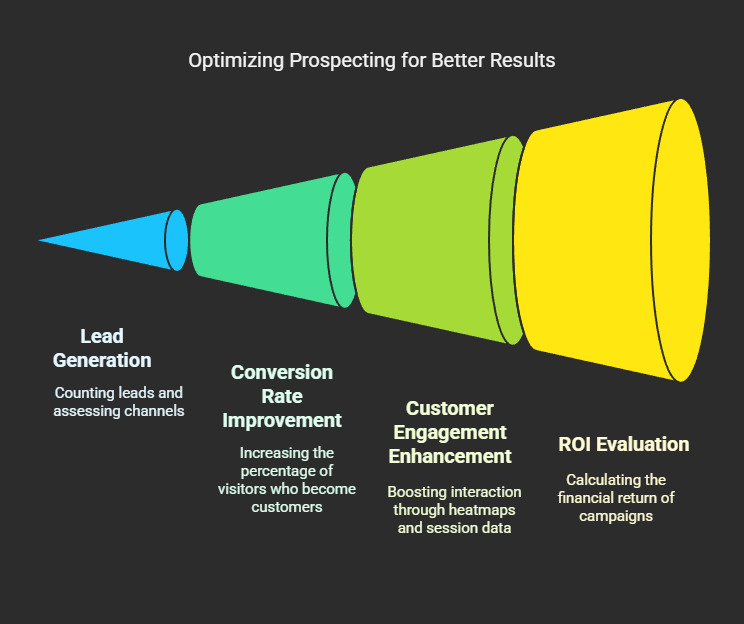
Ever played darts blindfolded? Didn't think so. Prospecting without measuring results is basically that.
Here’s what you should track:
- Website Traffic: Who’s visiting, and from where? Tools like Google Analytics give you the inside scoop.
- Lead Generation: Count your leads, check your channels, ditch what isn’t working.
- Conversion Rates: How many visitors are turning into actual leads or customers? Aim for more than your Instagram likes.
- Customer Engagement: Check heatmaps, session lengths, and social shares. If they're bouncing faster than a rubber ball, you've got tweaks to make.
- ROI (Return on Investment): Always ask—"Was this campaign worth my hard-earned cash?" Use this formula: (Revenue – Cost) / Cost x 100 = % ROI.
Understanding Prospecting Costs and ROI
Prospecting ain’t free. Cold prospecting typically eats about 50% of your deals. Here's a quick reality check on average cost per lead:
- Online Marketing: $92
- Financial Services: $658
- Education Industry: $950
- SaaS Companies: $220
- Business Consulting: $430
Prices fluctuate based on specifics, but you get the gist—new customers don’t come cheap.
Conclusion
Prospecting can feel like a chore, but it's critical for steady growth. Yes, you'll face rejection, boredom, and the occasional existential crisis. But armed with a strategic prospecting plan, a touch of humor, and tools like Leadplay, you'll have the confidence to fill your pipeline consistently.
Happy prospecting—may your leads be plentiful and your coffee strong!